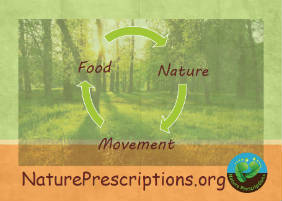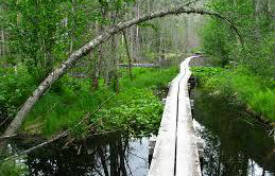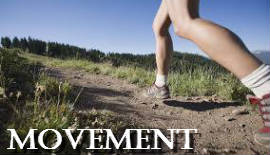Not only can being active outside in nature improve your physical health, but it can also improve your mental health. Spending time in nature can be a quiet time without distractions that can allow for mental decompression and reflection. It has been shown to elevate mood and help in the reduction of stress.
Kids in Nature
Parks let kids explore and discover nature. Outdoor play is a great way for kids to increase their activity and fitness level. It can also allow them to interact with peers. The goal is to get kids active in nature at an early age so they can learn that outdoor play is fun and something they can be excited about doing. Research has shown that children with ADHD tend to be able to focus better after spending time outdoors. The National Environmental Education Foundation has realized the importance of nature in the lives of children, and has a program geared towards getting kids more involved with nature. You can read more about it on their site.
Another comprehensive site about all things children in nature is: childrenandnature.org
Parks also provide walking/hiking trails that are great ways for kids to explore. Discover the Forest is a great resource for kids when planning a hiking trip, and it includes a park finder where you can search by zip code to find a park near you. Below are some ideas to make trails more exciting for kids.
- Play nature bingo where you spot the objects on the trail. Click here to download three different hiker bingo cards.

- Play a scavenger hunt where kids need to find things that are soft, hard, fuzzy, bumpy, smelly, etc.
- Play a game of 20 questions with something that can be found in nature.
- Depending on where you live, Track Trails can provide you with exciting activities on your local trails.
- Animal Athletics created by the Track Trails program can also be a fun activity on trails.
- For all types of outdoor activity ideas for kids, check out this site.
Parks are not only good for individual health and mental wellness, but they are also good for the cities we live in.
They reduce temperatures in cities.
Urban areas are warmer than the surrounding urban areas (up to 12.9 degrees C), due to a variety of factors. These include the absorption of heat by concrete and asphalt, the heat output from motor vehicles and industry, and decreased cooling from evaporation due to less soil, grass, trees, etc. Parks help provide cooler areas within a city through shade, evaporative cooling, and decreased heat absorption. Learn more about warmer urban areas.
When it rains on impervious surfaces such as buildings and roads, water runs off these surfaces and into storm drains. Storm water runoff carries pollutants from roadways directly into rivers, lakes, or streams. Parks on the other hand, allow the storm water to be absorbed by the soil to be used by plants and trees or to filter below the surface and replenish ground water. Learn more about runoff.
Reduce air pollution.
Trees and other vegetation in parks can remove carbon dioxide pollution from the air. Since parks also reduce the air temperature in and around the parks, the buildings around the park will use less energy for cooling systems and therefore contribute less pollution. Learn more about air pollution.
The trees, plants, and grass in a city park provide habitats for wildlife ranging from birds, to butterflies, to small mammals. They can provided a refuge for the wildlife that otherwise might not survive in a city. It is important to keep this habitat safe and intact. Learn more about parks and wildlife.
Nature does such wonderful things for us; Click here to learn what you can do for nature.
“For most of history, man has had to fight nature to survive; in this century he is beginning to realize that, in order to survive, he must protect it.”― Jacques-Yves Cousteau




 Click picture above to download your own Nature Prescription
Click picture above to download your own Nature Prescription






